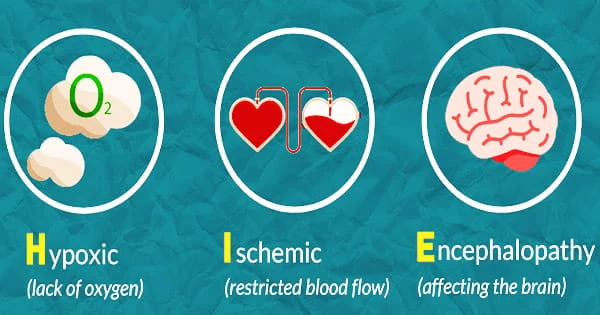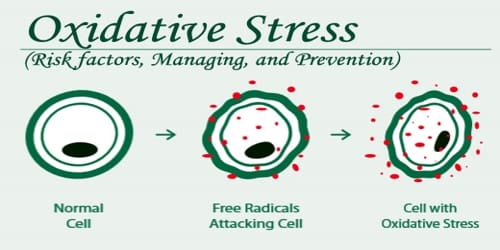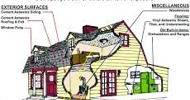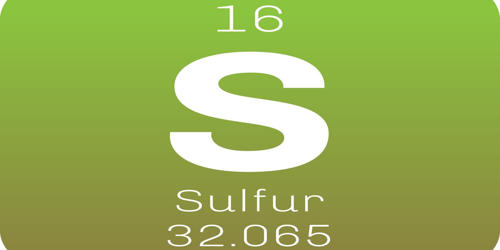Hypoxic-ischemic encephalopathy (HIE) is a kind of brain injury in newborns caused by a lack of oxygen and restricted blood flow. Hypoxia is a condition in which the supply of oxygen to organs, including the brain, is reduced. Ischemia is a condition in which the blood flow to the organs is insufficient. Any type of broad brain malfunction is referred to as encephalopathy.
HIE can develop during pregnancy, labor, and delivery, as well as after the baby is born. There are several reasons for this. This is a wide word that refers to any harm that a baby suffers during or shortly after birth. Birth asphyxia, perinatal asphyxia, and neonatal encephalopathy are all words used to describe HIE.
Therapeutic hypothermia can help avoid or reduce lasting brain damage in some situations, but it must be administered within hours of the baby’s birth or an oxygen-depriving accident. Some children will have no health problems or have mild or moderate impacts from HIE, while others will develop developmental delays, cerebral palsy (motor impairment), epilepsy, or cognitive impairment.
HIE is sometimes known as birth asphyxia, however, this term only applies to infants with severe brain injuries who meet certain criteria. Many newborns with HIE have permanent health issues and abnormalities, both with and without therapeutic hypothermia. Cerebral palsy (CP), cognitive disability, epilepsy, hearing and vision problems, and many more conditions are among them.
Low oxygen or blood flow can cause difficulties in the lungs, liver, heart, colon, and kidneys, and HIE affects the brain. For two primary reasons, the full extent of HIE damage is rarely obvious right after birth:
The effects of HIE on the brain are changing all the time. When blood flow to areas of the brain is cut off, cells begin to degrade, die, and release toxins that are harmful to other cells. These cells then begin to die and the chain reaction continues, causing brain harm to spread over hours or days. This chain reaction can be disrupted by therapeutic hypothermia.
HIE damage might sometimes go undetected until a kid exhibits developmental difficulties. Impacts on mobility, for example, may not be apparent until the kid struggles to fulfill milestones like crawling or walking.
HIE is classified as mild, moderate, or severe when it is identified. When HIE is classified as moderate or severe, it can cause long-term disability and, in the worst-case scenario, death. There is no cure for HIE if permanent brain damage has occurred.

Causes of hypoxic-ischemic encephalopathy (HIE)
HIE can be caused by a variety of issues that arise during pregnancy, labor, delivery, and recovery. In many cases, however, the cause of HIE is unknown. Medical negligence is a factor in many situations. Doctors, for example, may fail to appropriately monitor the mother’s and baby’s health and spot potential problems.
Alternatively, they may detect issues but fail to address them or do so in a timely manner. Problems that can cause HIE during pregnancy include:
- Problems with blood flow to the placenta
- Preeclampsia
- Maternal diabetes with vascular disease
- Congenital fetal infections
- Drug or alcohol abuse
- Severe fetal anemia
- Heart disease
- Lung malformations
Potential causes of HIE during labor and delivery can include:
- Umbilical cord problems
- Abruption of the placenta or rupture of the uterus
- Excessive bleeding from the placenta
- Abnormal fetal position, such as the breech position
- Prolonged late stages of labor
- Very low blood pressure in the mother
Problems after delivery can include:
- Severe prematurity
- Severe lung or heart disease
- Serious infections
- Trauma to the brain or skull
- Very low blood pressure in the baby
- Respiratory failure or cardiac arrest
Complications during the neonatal era, or a baby’s first month of life, can result in hypoxic-ischemic damage. Respiratory distress, jaundice, and newborn hypoglycemia are all factors that can lead to an HIE diagnosis, especially if they are mismanaged.
Signs and symptoms of HIE
HIE is frequently discovered within the first few days of a baby’s life. A doctor will make the diagnosis based on particular symptoms, which can vary depending on the severity of the condition. The intensity and extent of the brain injury, as well as the parts of the brain that were affected, all influence the symptoms of HIE.
Babies born with HIE may:
- Be floppy and unreactive to sights or sounds. Some babies with HIE, on the other hand, are quite tense and react to stimulation more than a healthy newborn.
- Have abnormal movements or seizures.
- Have feeding problems due to weak muscles in their mouth and throat.
- Have a weak cry.
- Show signs of organ dysfunction, especially of the heart, lungs, kidneys, liver and blood.
Diagnosis & Treatment for HIE
HIE is classified as mild, moderate, or severe when it is identified. The severity of your baby’s HIE will influence the treatment that is recommended. HIE may be suspected if a substantial risk factor such as fetal distress or low heart rate happened during labor and delivery, or if the baby required assistance with breathing or had a low heart rate after birth.
The majority of babies who have mild HIE recover rapidly. If your baby has mild HIE, doctors will constantly watch him or her to ensure that he or she is stable and does not require further treatment. A neurologist will assess your baby, who will be monitored for seizures and evidence of brain dysfunction using an electroencephalogram, as well as undergo neuroimaging procedures like magnetic resonance imaging (MRI) to look for signs of brain injury.
MRI is now the most sensitive method of detecting brain injury, but the infant may be too unwell to be transported for an MRI or may not be able to bear the extended scanning period (approximately 45 minutes). There is a danger of mortality or long-term brain damage if your baby develops moderate to severe HIE.
Cooling the newborn for three days is the immediate treatment for infants born with HIE. There may be less brain harm if the brain is cooled just a few degrees below normal body temperature immediately after birth, according to research.
The treatment must be administered within six hours of delivery, according to current standards, while there is some evidence that it may be useful if given up to 24 hours later.
Unfortunately, there is no definitive treatment for infants with HIE. Most therapies are directed at supporting the infant’s affected organs including:
- Supporting the heart and blood pressure
- Sustaining kidney and liver function
- Mechanical ventilation may be required if the infant cannot breathe completely on their own
- If the baby has seizures, they must be controlled with medications
Medical professionals should also give supportive care, which might include things like assisting the baby to breathe, regulating and preventing seizures and low blood sugar, reducing brain swelling, and more. Cooling can help some babies with moderate or severe HIE who are delivered after 36 weeks and lessens the likelihood of long-term damage, according to research.
















